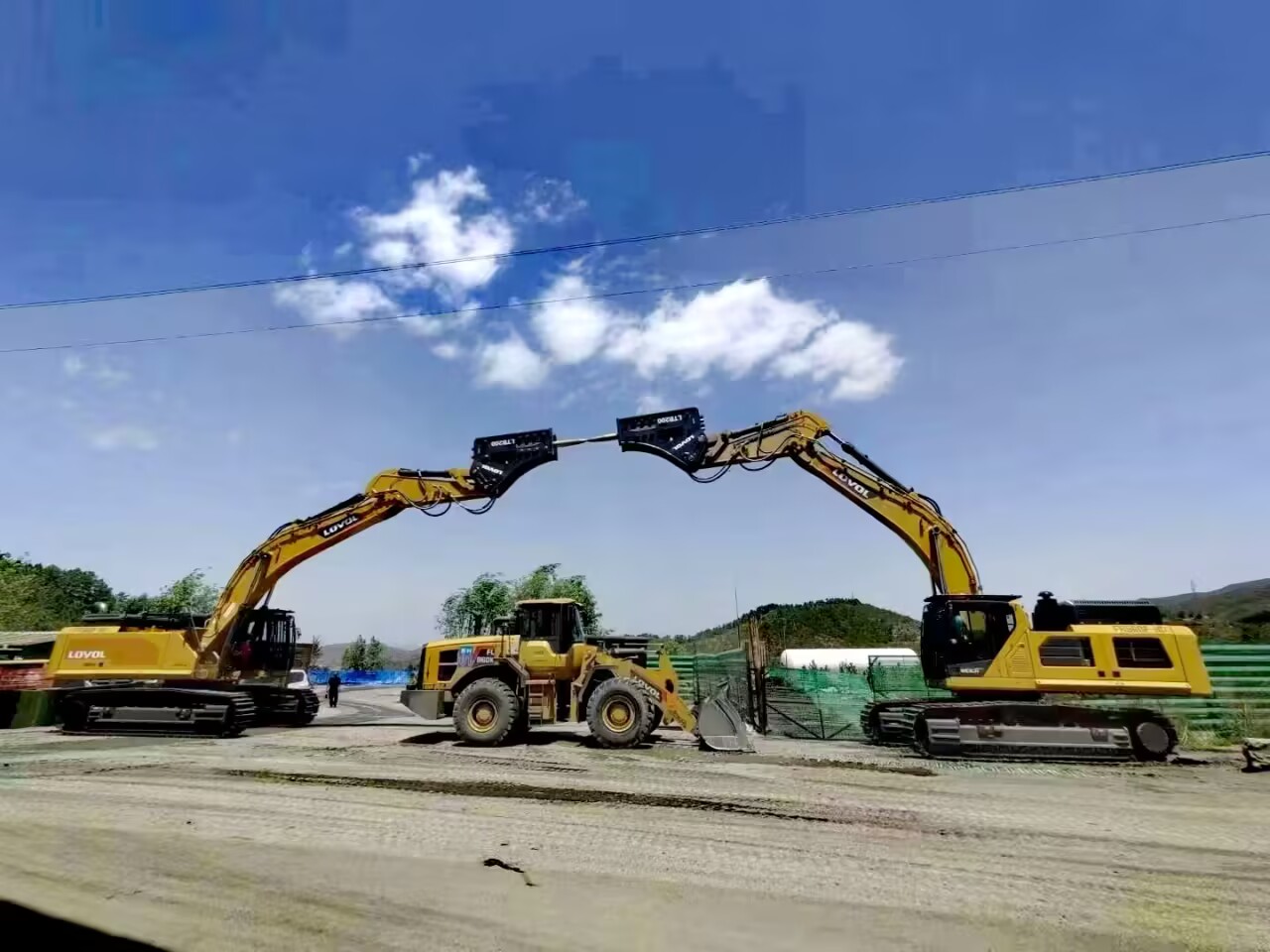- All
- Product Name
- Product Keyword
- Product Model
- Product Summary
- Product Description
- Multi Field Search
Views: 7 Author: Site Editor Publish Time: 2025-03-04 Origin: Site

The construction machinery industry is on the brink of a transformative phase, driven by advancements in technology, sustainability concerns, and evolving construction practices. As we move into 2025, the following key trends and challenges will define the landscape for construction equipment manufacturers, operators, and suppliers.
Smart Machinery & IoT Integration:The Internet of Things (IoT) will continue to revolutionize the construction industry, making machinery smarter and more interconnected. In 2025, expect to see an increase in construction equipment embedded with IoT sensors, providing real-time data on machine health, fuel efficiency, usage patterns, and location. These sensors will help reduce downtime, improve maintenance schedules, and increase productivity.
Automation & Autonomous Machines:Autonomous construction equipment (such as bulldozers, excavators, and cranes) is set to become more widespread by 2025. With advancements in AI, machine learning, and robotics, autonomous vehicles will be increasingly used for repetitive tasks such as excavation, grading, and material transport. This shift will not only increase safety and productivity but also address the ongoing shortage of skilled labor in the industry.
Drones and Robotics for Site Surveys:Drones and robots will become more integral to site surveys, inspection, and monitoring. Drones equipped with cameras and sensors will provide real-time data and 3D mapping, allowing contractors to monitor progress and ensure quality control more efficiently. Robotics will take on roles such as bricklaying and concrete pouring, reducing human labor requirements.
Electric & Hybrid Equipment:Environmental concerns and stricter emissions regulations are pushing the industry toward greener machinery. By 2025, a significant percentage of construction machinery is expected to transition to electric or hybrid models. These machines will help reduce emissions, improve fuel efficiency, and meet stricter sustainability standards. Expect electric excavators, bulldozers, and cranes to become more common on construction sites.
Sustainable Construction Materials & Practices:Construction equipment will also evolve to support sustainable building practices. There will be a greater focus on equipment designed to work with sustainable materials, reduce waste, and minimize the environmental impact of construction operations. For instance, machinery designed for precise demolition and material recycling will see growth.
Energy Efficiency:Machinery manufacturers will focus more on fuel-efficient technologies, including engines that comply with the latest environmental standards (such as Stage V emissions standards in Europe and Tier 4 in the US). Energy-efficient equipment will not only reduce environmental footprints but also offer long-term cost savings to operators.
Building Information Modeling (BIM) Integration:The use of BIM will continue to grow, and in 2025, it will be more integrated with construction machinery. BIM software will help construction teams design, simulate, and optimize operations in a virtual environment, resulting in more efficient use of equipment and labor. Machinery will be connected to BIM data, allowing operators to receive real-time updates and instructions.
Fleet Management Software:As fleet management becomes more sophisticated, construction companies will increasingly rely on digital solutions to track and manage their equipment. Advanced software will allow for the optimization of fleet operations, including predictive maintenance, scheduling, and utilization analysis. This will help reduce downtime, extend the life of machinery, and improve overall operational efficiency.
Growth in Emerging Markets:The demand for construction machinery will continue to grow in emerging markets, particularly in Asia-Pacific, Africa, and Latin America. Urbanization and infrastructure development in these regions will drive demand for a wide range of machinery, including excavators, backhoes, and material handling equipment. As these regions modernize their construction industries, there will be a focus on affordable yet advanced machinery solutions.
Infrastructure Investments and Urbanization:Governments in developed economies are expected to increase infrastructure investments to drive post-pandemic recovery. Large-scale infrastructure projects such as road construction, bridges, and urban development will require significant machinery support. The rise in smart cities and green building projects will also boost demand for specialized equipment.
Mining & Resource Extraction:As global demand for raw materials increases, mining operations will drive further demand for heavy-duty construction machinery. Machines like haul trucks, crushers, and drilling rigs will be in high demand to support mining activities, particularly in resource-rich regions.
Skilled Labor Shortage:The construction industry has long struggled with a shortage of skilled labor. In 2025, this issue will continue to be a challenge, prompting more reliance on automation and digital tools to bridge the skills gap. The industry will likely place a greater emphasis on training and upskilling workers to operate new, advanced machinery, ensuring that human operators remain an essential part of the construction process.
Health & Safety Focus:Construction machinery manufacturers will focus more on improving safety features, driven by the increasing focus on worker safety and regulatory pressures. Technologies like collision detection, enhanced visibility systems, and anti-fatigue features will become standard on new machines.
Supply Chain Disruptions:Although the global supply chain is recovering, challenges such as raw material shortages, shipping delays, and geopolitical tensions may continue to affect the production and availability of construction machinery. Manufacturers will increasingly look for ways to diversify supply chains and improve resilience in their operations.
Customization and Modular Equipment:With the evolving needs of the construction sector, there will be a growing demand for customized machinery that can adapt to different project requirements. Modular equipment that can be easily reconfigured or adapted for various tasks will see increased adoption, providing companies with flexibility without the need for a large fleet of specialized machines.
Rise in Equipment Rentals:In 2025, the construction equipment rental market is expected to expand significantly, as more companies prefer renting over purchasing machinery. Renting reduces upfront costs, maintenance responsibilities, and storage needs. The increasing reliance on short-term projects and fluctuating construction demand will further drive this trend, as businesses look to scale operations without investing in costly assets.